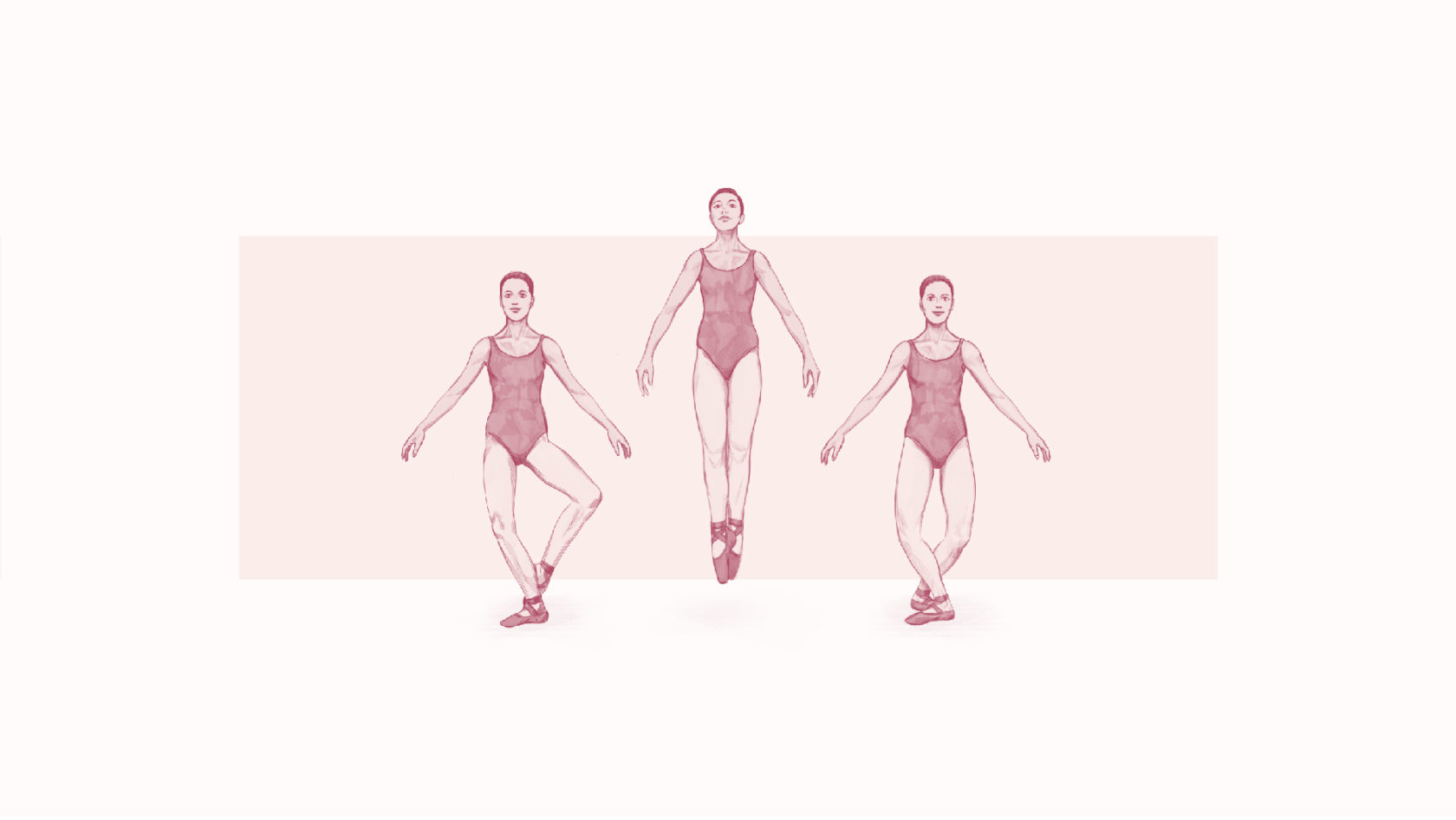Ballet consists of movement families. Once a student has learned some of the basic forms of jumps, they can begin to explore all of the different ways we jump in ballet. Use this guide to teach your intermediate to advanced students how to sauté (jump) and the differences between the five types of jumps. Enjoy!
The Five Types of Ballet Jumps
- Sauté = any jump from two feet landing on two feet; sometimes, one foot to the same foot.
- Temps Levé = a hop from one foot to the same foot.
- Jeté = any jump or leap from one foot to the other.
- Assemblé = a jump from one foot landing simultaneously on two feet.
- Sissonne = a jump from two feet, landing on one foot.
Sauté can refer to all ballet jumps in general, as well as to the specific ones mentioned above.
Break It Down Now
The beginning and ending of a correct Sauté (ballet jump) is a correct Demi Plié (or fondu).
- Going into the air: Begin in a correctly placed demi plié, back straight, knees bent exactly over feet, muscles ready.
- While in the air: Legs and feet stretch fully, as if doing battement tendu with both legs at once.
- Landing: Use the natural shock absorbers in your body: knees, ankles, feet. Land softly in a good demi plié. Toes will touch the floor first, very lightly, then heels, then knees will bend. This all happens very quickly. If your landing is quiet and your heels returned to the floor, you probably used your muscles correctly.
Perfecting Your Jumps
Dancers need to not use arms or shoulders to get into the air. They need to be able to place their arms, head, etc. wherever the choreography requires. Keeping arms and shoulders and neck muscles quiet during basic jumps helps you to be ready for complex coordinations later on.
In steps of elevation, one set of muscles sends the dancer into the air, and the opposing set assists in creating a soft, well-placed landing. If the jumping muscles try to take over the job of the landing muscles, overwork may cause over-development.
Some tips . . .
- If heels pop off the floor either just before jumping, or on landing, the calf muscles have contracted at the wrong time. They need to contract as you leave the floor, but not before, and not on landing.
- Landing with arches rolled over may cause injuries, if not now, then later. Keep all five toes of each foot on the floor, and your feet will probably not be “rolled”.
- Landing with the back overarched, or seat sticking out doesn’t look good, and doesn’t help your muscles to jump well.
Here are some good exercises to help your students improve their jumps:
1. Demi Plié with Rise
1 Demi plié.
2 Straighten knees.
3 Rise with knees straight.
4 Lower heels to floor, knees straight.
Do four times, using plié music at first. Later, quicker music can be used to help the coordination become faster.
2. Sustained Demi Plié
1-2 Demi plié & stay down.
3 Lift toes slightly off the floor. (This forces the calf muscles to relax, which is what they arc supposed to do in a demi plié, and in landing from a jump.)
4 Lower toes to floor.
5-6 Lift & lower toes again.
7-8 Straighten knees out of the demi plié.
3. Sustained Sautés
Do one sauté in first position, hold the plié and check your placement. Straighten knees. Rest. Repeat about four times.
Relaxation in Jumping
Relaxation is important in order for for muscles to do their best. All movements and exercises have both tension and relaxation. Muscle groups alternate work during movement, steps, and exercises, allowing for continual periods of rest for the muscles. This permits good circulation, allows the muscles to develop endurance, and makes the dancer less prone to injury.
Artistically, those moments of muscular relaxation encourage coordination, skill, grace, and expression. A dancer who holds his or her muscles in a constant state of stress will give a feeling of stress to the movements being performed. But the dancer whose muscles get those tiny moments of rest will be more able to move well, and to add the artistry of expression to ballet.
Help your students get the “high” that can be achieved from executing beautiful, safe and precise jumping. Reviewing these principles often before petit and grande allegro exercises will really help them to grasp all that is happening in their bodies as they jump. Have fun!
Related Articles
- Create the Illusion of Flight
- Six Ways to Slay Petite Allegro
- Creating Fearless Turners
- How Teachers Help Their Students Improve Coordination
Work Cited: “Ballet Arts: Classical Ballet 2” by Ruth H. Brinkerhoff, copyright The Ballet Source, 2016.


Comments
LenA says
THANK YOU! THIS IS A VERY HELPFUL INFORMATION.
Add Comment